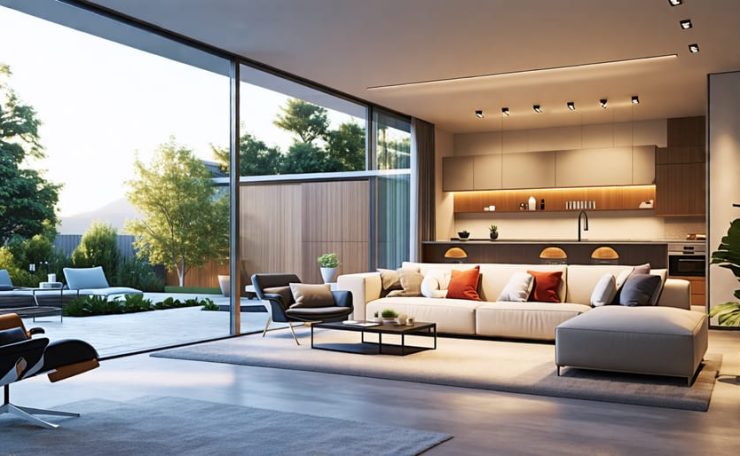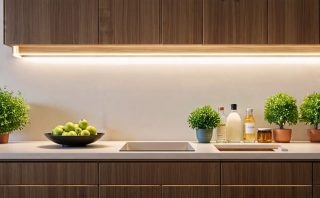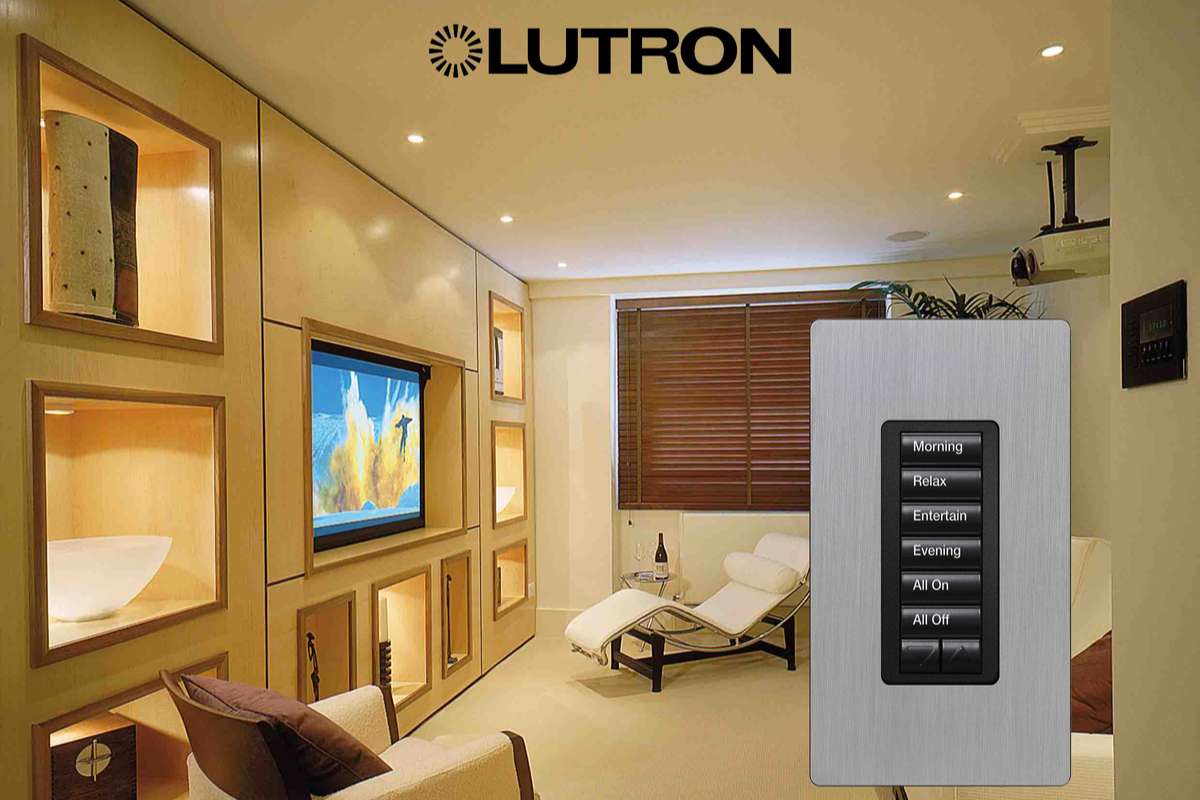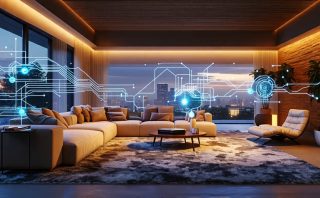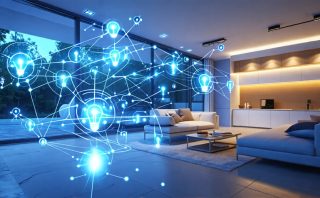Upgrade your space with lighting automation systems by integrating smart controls tailored for any setting. Elevate interior aesthetics and functionality by strategically installing sensors that adjust lighting based on natural light levels and room occupancy. Enhance energy efficiency through programmable schedules that automatically dim or switch off lights in unoccupied areas, ensuring savings and sustainability. Personalize the ambiance with customizable scenes that suit different moods or activities, providing both convenience and style. Explore the magic of smart lighting to discover innovative solutions that can transform any environment. Invest in scalable systems that grow alongside your needs, offering seamless integration with existing smart home technologies. Prioritize user-friendly interfaces for optimal control, whether via smartphone apps or voice commands. By considering these factors, harness the full potential of lighting automation to create dynamic and responsive living and working environments.
Understanding Lighting Automation Systems
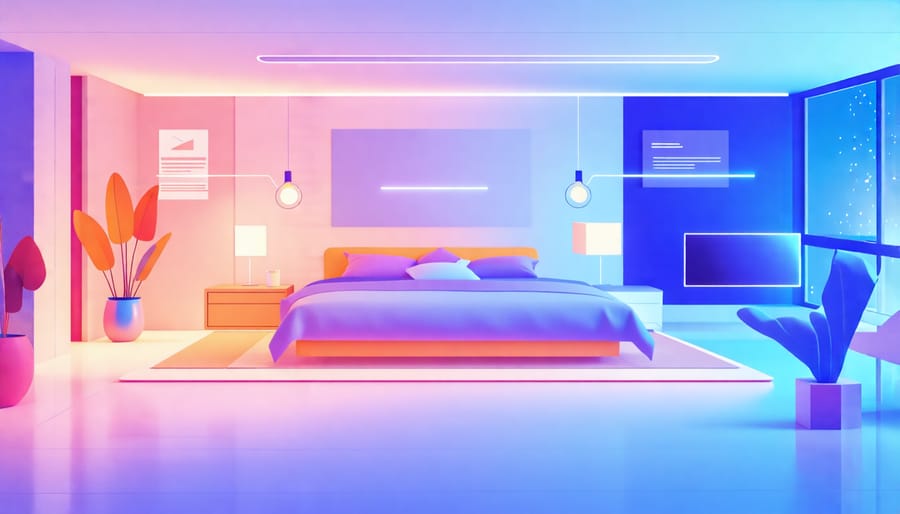
Components and Technologies
Lighting automation systems seamlessly blend technology with design, creating dynamic environments that cater to both aesthetic and functional needs. Key components of these systems include smart bulbs, motion sensors, light dimmers, and control interfaces. Smart bulbs, often equipped with programmable features, allow for customizable lighting scenes and energy efficiency. Motion sensors enhance convenience and security by automatically adjusting lighting based on occupancy and movement. Light dimmers provide adjustable brightness, enabling the creation of ideal ambiances for various settings. The control interfaces, which may include wall panels, mobile apps, or voice command systems, facilitate user-friendly management of comprehensive lighting arrangements.
Technologies such as wireless communication protocols, including Zigbee and Z-Wave, play crucial roles in achieving seamless integration and responsive control. These protocols support bidirectional communication, ensuring that devices remain synchronized and updates are executed smoothly. Additionally, cloud-based platforms enable remote access and easier customization, expanding control beyond the traditional on-site interactions. Proper selection and configuration of these components and technologies transform ordinary spaces into smart environments, enhancing user comfort, energy efficiency, and the overall interior design experience.
Benefits of Lighting Automation
Lighting automation offers numerous benefits that cater to a diverse range of users, from homeowners to commercial business owners. Firstly, it significantly enhances energy efficiency. Modern systems allow precise control over lighting schedules and intensity, reducing energy waste and lowering utility bills. Additionally, integrating sensors ensures lights only operate when needed, maximizing savings. Beyond efficiency, lighting automation transforms ambiance by offering customizable lighting scenes to suit any occasion or mood. Imagine hosting a dinner party with perfect illumination tailored for a dining experience, or a calming atmosphere for unwinding after a busy day. This flexibility is invaluable for interior designers and architects aiming to create dynamic environments. For those interested in exploring options, cutting-edge smart lighting solutions offer seamless integration with existing home systems. Furthermore, ease of use through smartphone apps or voice control ensures that managing lighting is both intuitively simple and accessible, enhancing lifestyle and convenience.
Applications in Interior Design
Residential Spaces
Incorporating lighting automation systems into residential spaces offers homeowners a seamless blend of convenience, functionality, and aesthetic enhancement. In living rooms, automated lighting can create a dynamic atmosphere suitable for any occasion. Homeowners can program their smart lights to gradually dim as the evening progresses or select preset scenes for movie nights or social gatherings. This results in a harmonious ambiance without the need for manual adjustments.
Kitchens benefit from lighting automation by ensuring optimal illumination for practical tasks while adding a touch of elegance. Motion sensors can activate task lighting when homeowners enter the space, providing brighter focus areas for cooking and food preparation. Additionally, under-cabinet lights can be programmed to create a soothing environment when softer lighting is desired during dining or early mornings.
Bedrooms are transformed into personalized sanctuaries with automated lighting. Homeowners can set schedules for the lights to mimic natural sunlight patterns, aiding in relaxed wake-up phases and promoting restful sleep. Smart dimming features offer the perfect balance of brightness for reading or winding down, while voice control options enhance hands-free convenience.
For homeowners curious about further enhancing their space, exploring integrated smart lighting offers advanced solutions that integrate effortlessly into home design. Lighting automation not only elevates daily living but also aligns with modern trends in home technology, ultimately adding value and sophistication to any residential setting.
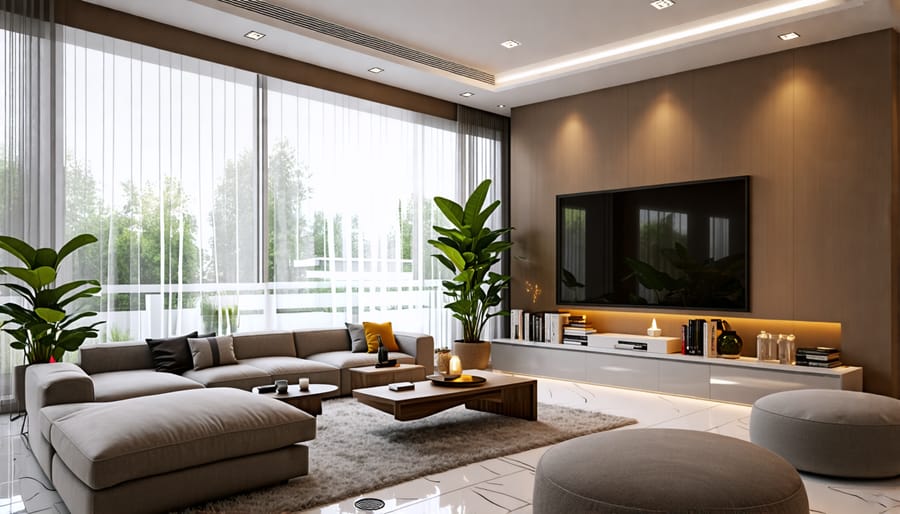
Commercial Spaces
Lighting automation systems have become integral in transforming commercial spaces such as office buildings, retail environments, and hospitality venues. In office settings, automated lighting can significantly enhance productivity and employee well-being. By automatically adjusting to natural light levels and occupancy, these systems not only reduce energy consumption but also create a pleasant working environment. This dynamic adjustment supports optimal focus and comfort throughout the workday.
In retail environments, the impact of lighting automation is equally pronounced. Retailers can use these systems to create engaging and enticing display areas that enhance product visibility and appeal. By adjusting warmth, intensity, and color, stores can craft unique atmospheres that align with branding and promotional activities, thus influencing customer behavior and driving sales.
The hospitality sector benefits from lighting automation systems by fostering inviting and memorable experiences for guests. These systems allow for the seamless transition between different lighting scenes, ideal for various times of the day or specific events. This adaptability not only enhances aesthetic appeal but also maintains cost efficiency through optimized energy use.
For architects, interior designers, and business owners, incorporating modern automated lighting solutions offers a competitive edge by blending cutting-edge technology with aesthetic functionality. As these systems become increasingly sophisticated, they offer bespoke solutions to meet the diverse needs of commercial spaces, ensuring a sustainable and high-quality environment.
Selecting the Right Lighting Automation System
Key Features to Consider
When choosing a lighting automation system, consider its compatibility with existing smart home devices to ensure seamless integration. Look for systems offering flexible scheduling options, allowing you to set different lighting scenes based on time, mood, or activity. Energy efficiency is another critical feature, as automated lighting can significantly reduce energy consumption through features like dimming and motion detection.
Ease of use is paramount, so a user-friendly interface or app is essential. Opt for systems offering both manual and remote control via smartphones or voice assistants. Scalability is also important; choose a system that can expand to accommodate future needs without requiring a full overhaul.
Security features like secure data encryption are vital, protecting your privacy and preventing unauthorized access. Finally, consider a system with personalized consultation services, providing tailored advice and support for your specific lighting needs. Comparing features of various systems can guide you to the best choice for your home or business environment.
Product Comparison
When evaluating lighting automation systems, it’s important to consider key products like the Lutron Caséta, Philips Hue, and Crestron Lighting Control. Lutron Caséta is revered for its ease of installation and compatibility with various smart home ecosystems, offering seamless control and reliable performance. However, its premium price point and limitations in advanced customization might deter budget-conscious users. Philips Hue excels in versatility, featuring a wide array of color options and an intuitive app interface, making it ideal for creative lighting designs. Yet, its dependency on the proprietary bridge for certain features could be seen as a drawback for those seeking simplicity. Crestron Lighting Control stands out for extensive scalability and integration in commercial settings, delivering robust performance across large spaces. Nonetheless, its complexity and higher cost might not suit small-scale applications or residential use. Analyzing these products based on your specific needs ensures a more tailored and effective lighting solution.
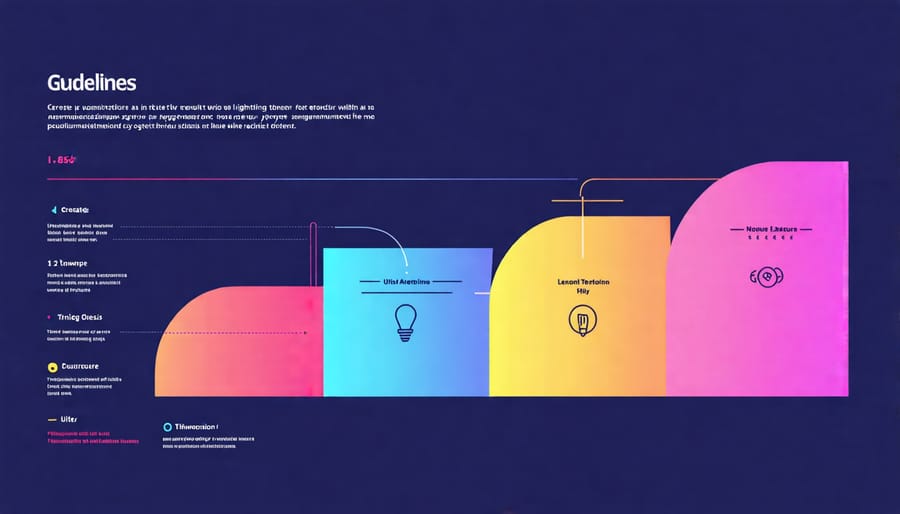
Challenges and Considerations
When implementing lighting automation, homeowners and business owners must navigate several challenges to ensure a smooth transition and optimal results. One common hurdle is compatibility with existing fixtures and electrical systems. Lighting automation systems need to integrate seamlessly with current setups, which may require additional upgrades or modifications. It’s crucial to consult with a lighting professional who can provide personalized advice on compatible products and potential adjustments.
Another challenge lies in the initial cost of setup. While the long-term savings on energy bills can be significant, the upfront costs of installing smart lighting systems may deter some individuals. However, investing in efficient technologies, such as energy-efficient lighting, can offset these initial expenses over time. Additionally, many vendors offer flexible pricing plans or promotions that can help mitigate initial costs.
User interface and control complexity are also key considerations. Navigating new technology can be daunting, especially for those unfamiliar with smart home systems. Simplifying control interfaces and offering comprehensive user manuals or tutorials can help users gain confidence in operating their systems. Opting for platforms known for their intuitive design can enhance user satisfaction and ease of use.
Security concerns are another aspect to consider. As lighting automation involves wireless communication, ensuring robust security measures to protect against unauthorized access is critical. Selecting systems with strong encryption and regular updates can mitigate risks effectively.
By understanding these challenges and addressing them proactively, you can successfully implement a lighting automation system that enhances your space while delivering the benefits of modern technology.
Case Studies and Success Stories
Lighting automation systems have transformed spaces by enhancing design, efficiency, and user experience. In residential settings, homeowners have integrated smart lighting to craft moods, optimize energy use, and increase property value. For instance, a case study highlights a couple who revamped their living space by installing an intelligent lighting system. This system automatically adjusted brightness throughout the day, offering optimal ambience while reducing energy costs by 25%.
In the commercial realm, a retail chain implemented a lighting automation solution to improve customer engagement. The system adjusted lighting based on time of day and in-store activities, creating an inviting atmosphere that boosted sales by 15% over six months.
Interior designers and architects also benefit significantly. By integrating dynamic lighting in office spaces, one design firm created adaptable work environments conducive to concentration and creativity, directly enhancing employee productivity and satisfaction. These examples illustrate how strategically deployed lighting automation systems can elevate design outcomes across various applications, driving both aesthetic and functional benefits.
Conclusion
Embracing the innovation of lighting automation systems in your interior design projects presents remarkable benefits and opportunities. These systems not only enhance the aesthetic appeal of any space but also offer functional advantages like energy efficiency and customizable ambiance. For homeowners and design professionals alike, integrating such technology can transform a space, making it more adaptable and future-ready. Whether you’re working on residential spaces, commercial environments, or event planning, adopting automated lighting solutions allows for greater control, flexibility, and sophistication. By leveraging these systems, you invest not only in the current appeal but also in the long-term sustainability and technological advancement of your projects. As you consider your next design venture, exploring lighting automation systems could set your space apart, demonstrating a commitment to innovative and thoughtful design.

